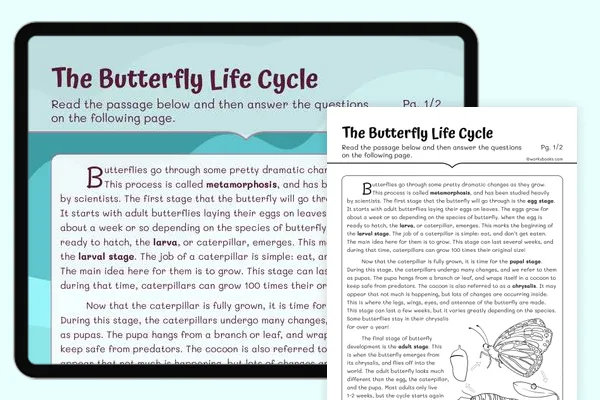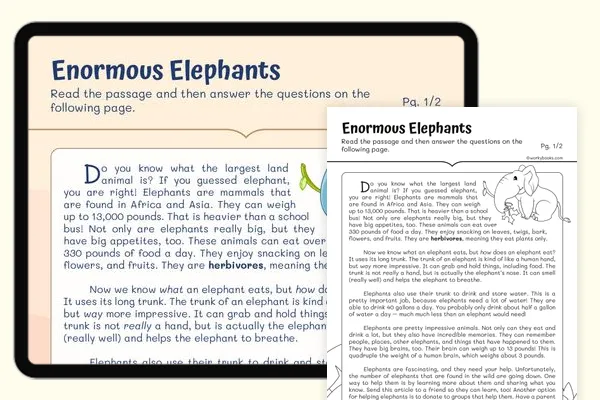The Turtle's Shell — Reading Comprehension
Grades
- 1
- 2
- 3
Standards
- RI.2.1
- RI.3.3
PRINT+DIGITAL RESOURCE
This learning resource is available in interactive and printable formats. The interactive worksheet can be played online and assigned to students. The Printable PDF version can be downloaded and printed for completion by hand.
About This Reader
The turtle's shell is a remarkable feature that defines these ancient reptiles. This protective structure consists of two main parts: the carapace (top) and plastron (bottom). The carapace is made of bony plates covered by scales, forming a durable shield against predators. Turtles rely on their shells for more than just protection; it's an integral part of their skeleton, growing with them throughout their lives. When threatened, turtles can retract their head, legs, and tail into this natural fortress. Some species even have hinged shells that can close tightly, providing additional security. The shell's design varies among different turtle species, adapting to their specific habitats and lifestyles. From the streamlined shells of sea turtles to the high-domed shells of tortoises, each type serves a unique purpose in the turtle's survival strategy.
Perfect For:
👩🏫 Teachers
- • Reading comprehension practice
- • Auto-graded assessments
- • Literacy skill development
👨👩👧👦 Parents
- • Reading practice at home
- • Comprehension improvement
- • Educational reading time
🏠 Homeschoolers
- • Reading curriculum support
- • Independent reading practice
- • Progress monitoring
Reading Features:
📖
Reading Passage
Engaging fiction or nonfiction text
❓
Comprehension Quiz
Auto-graded questions
📊
Instant Feedback
Immediate results and scoring
📄
Printable Version
Download for offline reading
🔊
Read Aloud
Voice-over with word highlighting





















